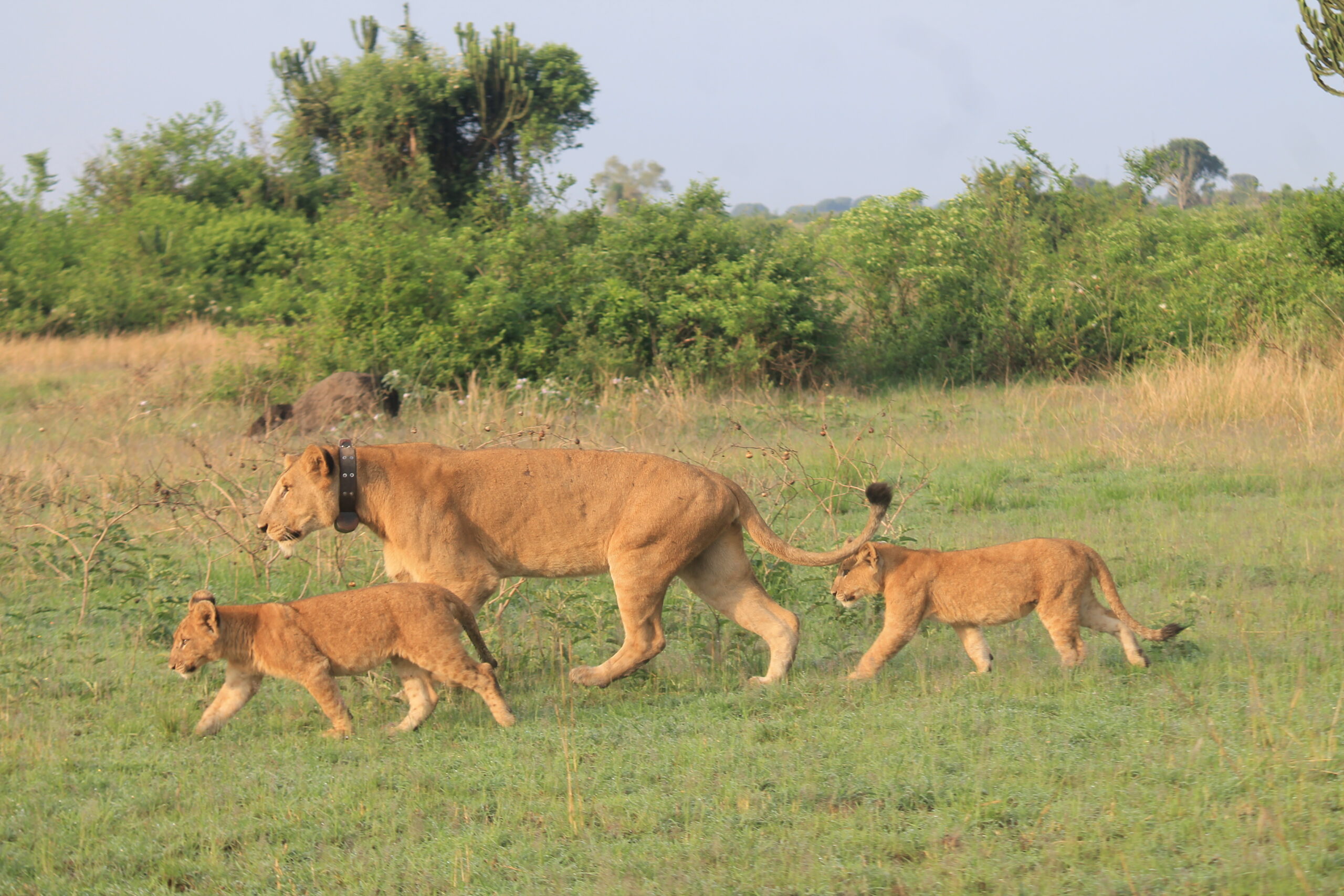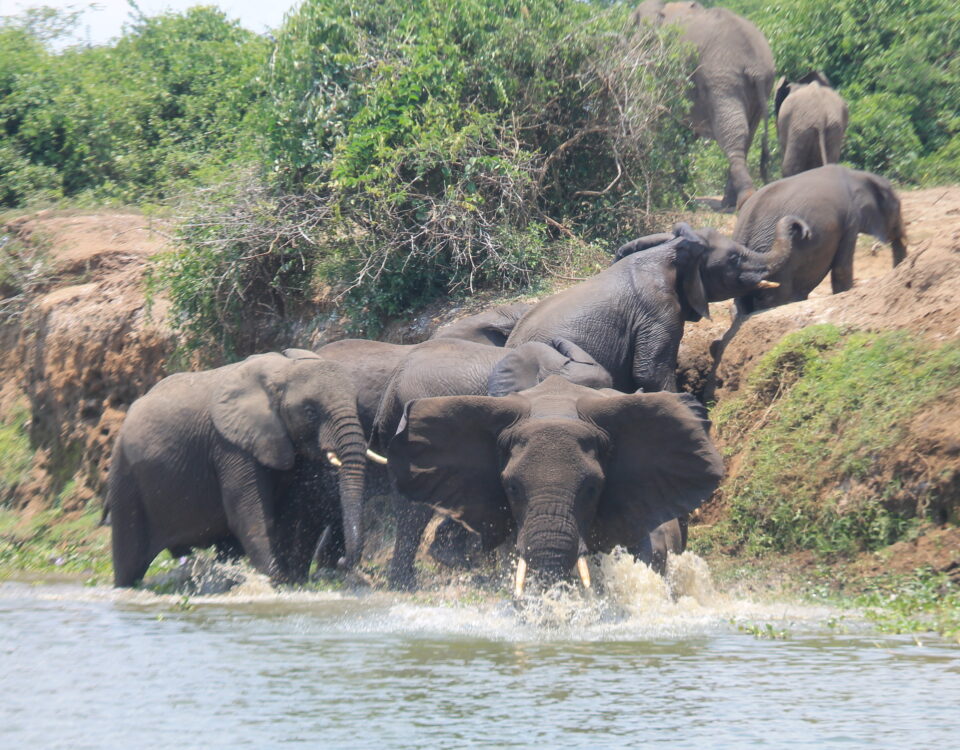
The Ultimate Safari Adventure in Uganda: A Journey Through Nature’s Wonders
March 30, 2025
A majestic Boat Cruise Adventure on kazinga channel in Uganda
March 30, 2025
A Jewel in Uganda’s Crown
Queen Elizabeth National Park (QENP), located in the southwest of Uganda, is one of the most renowned wildlife destinations in East Africa. Spanning over 1,978 square kilometers, this park is not only one of Uganda’s oldest and most visited national parks but also a UNESCO Biosphere Reserve, home to a stunning variety of ecosystems and an impressive range of animals. From savannahs and wetlands to dense forests and crater lakes, Queen Elizabeth National Park offers an unparalleled safari adventure. Whether you are an avid wildlife enthusiast or a casual traveler, this park is a must-visit on any safari in Uganda.
In this blog, we will guide you through the wonders of Queen Elizabeth National Park, from the wildlife you’ll encounter to the unique activities you can enjoy during your visit. Join us as we delve into one of Uganda’s most captivating safari destinations.
The Ecological Diversity of Queen Elizabeth National Park
Queen Elizabeth National Park is located in the western part of Uganda, bordered by Lake Edward to the south and Lake George to the northeast. The park is situated on the equator, which gives it a diverse range of ecosystems, including savannahs, wetlands, forests, and volcanic landscapes. This combination of habitats creates an ideal environment for a variety of animal and plant species.
The park is divided into several distinct regions, each offering different wildlife experiences. The most notable areas within Queen Elizabeth National Park are:
The Kasenyi Plains: A vast stretch of savannah that is home to a wide range of game, including elephants, buffaloes, lions, and antelopes.
The Ishasha Sector: Famous for its tree-climbing lions, the Ishasha sector provides a unique safari experience and is a highlight for many visitors.
The Mweya Peninsula: Situated along the shores of Lake Edward, this area is home to a variety of wildlife and is a popular spot for boat safaris.
The Maramagambo Forest: This lush forest is teeming with wildlife, including primates such as the black-and-white colobus monkeys, and is a great place for birdwatching.
This ecological variety ensures that every safari experience in Queen Elizabeth National Park is a new and thrilling adventure.
Wildlife in Queen Elizabeth National Park
Queen Elizabeth National Park is home to over 95 mammal species, including the famous Big Five: elephants, lions, buffaloes, leopards, and rhinos (though rhinos are now found in other parks like Ziwa Rhino Sanctuary). In addition to these iconic animals, the park is also home to several other species, making it one of the most biodiverse parks in Africa.
1. Lions
Queen Elizabeth National Park is famous for its lion population, especially the tree-climbing lions in the Ishasha sector. These lions have been known to climb fig trees, a rare behavior that provides a fantastic photographic opportunity. Witnessing these magnificent creatures lounging on tree branches is one of the most unique wildlife experiences in the world.
2. Elephants and Buffaloes
The park’s vast savannah and wetlands make it an ideal habitat for large herds of elephants and buffaloes. These majestic animals are frequently spotted along the Kasenyi Plains and other parts of the park. Watching elephants in their natural habitat is a captivating experience, especially when herds gather to drink at waterholes.
3. Hippos and Crocodiles
Boat safaris along the Kazinga Channel allow visitors to get up close and personal with hippos, who spend much of their time submerged in the water. The channel is also home to numerous crocodiles, making it a thrilling area to explore.
4. Antelopes and Other Species
The park is home to a variety of antelope species, including Uganda kob, topi, and waterbuck, all of which are commonly seen grazing in the grasslands. In addition, you may encounter warthogs, hyenas, and even rare species such as the giant forest hog.
5. Birdlife
With over 600 bird species, Queen Elizabeth National Park is a birdwatcher’s paradise. The park’s diverse ecosystems attract a wide variety of birds, from waterfowl and herons to raptors and woodland species. The Kazinga Channel and Lake George are particularly popular spots for birdwatching, offering opportunities to spot species like the African fish eagle, papyrus gonolek, and the rare shoebill stork.
Safari Activities in Queen Elizabeth National Park
The wildlife in Queen Elizabeth National Park is diverse and abundant, and there are several exciting activities to ensure you experience the park’s beauty and wildlife from various angles.
1. Game Drives
Game drives are the most popular way to explore the park and spot wildlife. The park offers both morning and evening game drives, allowing you to catch the animals at their most active times. The Kasenyi Plains, Ishasha sector, and the Mweya Peninsula are prime locations for spotting lions, elephants, buffaloes, and a wide range of antelopes.
A guided game drive gives you the opportunity to learn about the animals’ behavior and the ecosystems from an experienced guide, making it an educational and rewarding experience. The park’s roads are well-maintained, ensuring that your safari is comfortable and enjoyable.
2. Boat Safaris on the Kazinga Channel
A boat cruise on the Kazinga Channel is one of the most unique ways to experience Queen Elizabeth National Park. This 40-kilometer-long waterway connects Lake George and Lake Edward and is a vital lifeline for the park’s wildlife. The boat cruise offers the chance to get up close to large herds of hippos, crocodiles, and an array of bird species.
The relaxed pace of the boat safari allows you to enjoy the stunning scenery of the park, with views of the surrounding savannah and volcanic hills. It’s an ideal way to see animals from a different perspective, as they come down to the water to drink.
3. Lion Tracking
Queen Elizabeth National Park offers the unique opportunity to track lions on foot, with rangers guiding visitors to locate the big cats. This thrilling experience allows you to follow the lions’ footprints and learn about their behavior, movements, and role in the ecosystem. The lion tracking activity is a rare and exhilarating way to observe these magnificent creatures up close.
4. Birdwatching
With over 600 bird species, Queen Elizabeth National Park is a dream destination for birdwatchers. Whether you’re cruising on the Kazinga Channel or walking through the Maramagambo Forest, there are plenty of opportunities to spot rare and beautiful bird species. The park’s mix of wetland, savannah, and forest environments attracts a wide range of birds, from waterfowl to raptors.
5. Cultural Experiences
While the focus of your visit may be wildlife, Queen Elizabeth National Park also offers opportunities to connect with local communities. You can visit nearby villages to learn about the culture and traditions of the Bakonzo people, who live in the foothills of the Rwenzori Mountains. Local community tours offer a glimpse into the day-to-day lives of these people and provide insight into how they coexist with the wildlife and natural surroundings.
Best Time to Visit Queen Elizabeth National Park
Queen Elizabeth National Park can be visited year-round, but the best time to go is during the dry seasons, which typically run from December to February and June to September. During these months, wildlife is easier to spot as animals gather around water sources, and the roads are more accessible. The park’s landscapes are also at their most beautiful during these months, with clear skies and excellent visibility for game drives and boat cruises.
Accommodation in Queen Elizabeth National Park
Queen Elizabeth National Park offers a range of accommodation options, from luxury lodges to budget-friendly campsites, ensuring that there is something for every traveler. Some of the most popular lodges in the park include Mweya Safari Lodge, Katara Lodge, and Ishasha Wilderness Camp, each offering stunning views and comfortable amenities.
If you’re looking for a more rustic experience, there are also several campsites within the park, allowing you to immerse yourself in nature.
Why Queen Elizabeth National Park Should Be on Your Safari List
Queen Elizabeth National Park offers an incredible array of wildlife, landscapes, and activities that make it a premier safari destination in Uganda. From witnessing the rare tree-climbing lions in Ishasha to cruising along the Kazinga Channel, the park promises an adventure like no other. Its rich biodiversity, stunning landscapes, and wide range of safari activities ensure that Queen Elizabeth National Park remains a top choice for those seeking to explore the heart of Uganda’s wildlife.
Whether you’re an animal lover, a nature enthusiast, or a first-time safari traveler, Queen Elizabeth National Park is sure to provide an unforgettable safari experience. Don’t miss the chance to discover the beauty and magic of Uganda’s premier national park.




